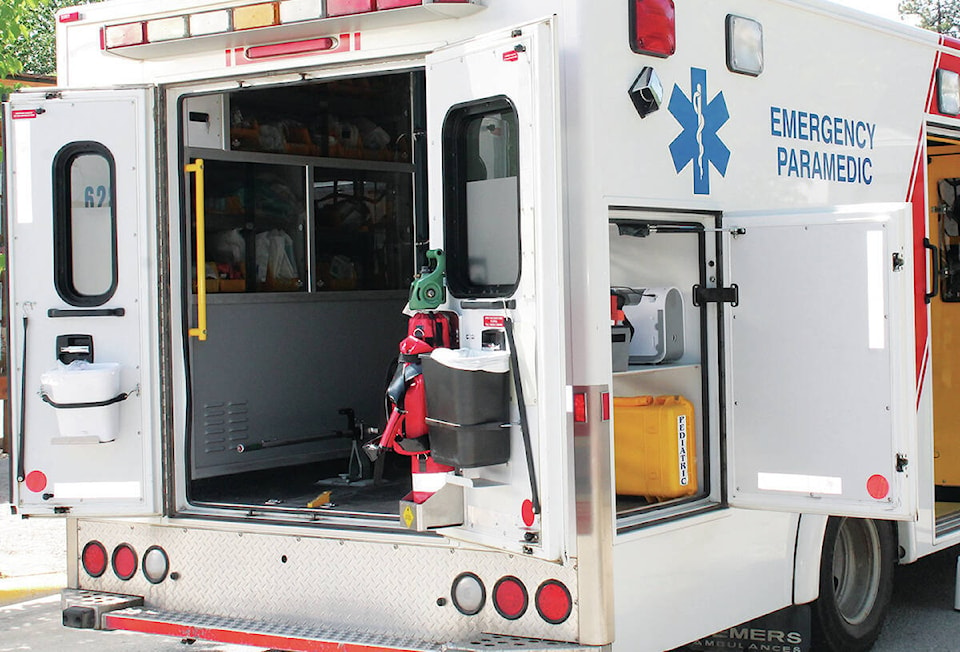With 20-year, 30-year and even 40-year veterans still rushing to scenes of accidents and fires, City of Red Deer Emergency Services is beating the odds when it comes to retaining paramedics in a high burn-out profession.
“We’re kind of unique here at the City of Red Deer,” admitted assistant deputy fire chief Curtis Schaefer on Friday.
With long waits at emergency departments these days, and too many inter-hospital patient transfers, many Alberta paramedics are only lasting seven to 10 years on the job before switching to lower-stress occupations, he added.
Red Deer EMS, meanwhile, just gave out two 20-year service medals to Captains C. Guse and D. Duchsher and two 30-year service medals to J. Duke and mechanic M. Lachman.
And in the new year, Schaefer is planning to present a 40-year medal to Platoon Chief Charles Ruether, who’s been helping city residents who are in life-threatening situations for four decades.
The latter is truly a rare achievement, said Schaefer. But he noted a “good majority of officers” at Red Deer EMS have been with the department for 20 to 30 years — which is considered a very long career in emergency services.
“We’ve been lucky,” said Schaefer — but it’s more than that.
Mike Parker, president of the paramedics union, the Health Sciences Association of Alberta, has spoken out about the struggling to find enough paramedics to do the job. He’s complained Alberta Health is not doing enough to fix “a toxic work environment” that leaves many paramedics feeling pressured into working too many overtime hours and filling extra shifts.
Systemic challenges are certainly being exacerbated by hospital and ambulance shortages admitted Schaefer.
But he believes the high staff retention within Red Deer EMS is possible because its workers are cross-trained fire-medics who can handle ambulance or fire calls.
Ambulance work is now so “high-volume” that when paramedics start feeling run-off-their-feet and stressed out, they can “shift focus” and work as firefighters for a while, he explained. Fewer fire calls gives them a chance to recharge, he added.
Schaefer believes both ambulance and fire workers deal with emotionally tough, even traumatic, situations on occasion. One of the worst examples was brought home last week when an Airdire paramedic was sent to an accident scene and unknowingly worked on her badly injured 17-year-old daughter, who later died.
“It can be a difficult job, but because we are integrated….people can do different things at different times,” Schaefer added.
Mixing it up keeps EMS staff fresher, he added, and “variety is the spice of life…”
Schaefer added that another avenue for EMS workers who go through periods of intense stress or trauma or experience violence or harassment is talking to a peer support team that can offer recommendations for counselling and other kinds of assistance.
lmichelin@reddeeradvocate.com
Like us on Facebook and follow us on Twitter
